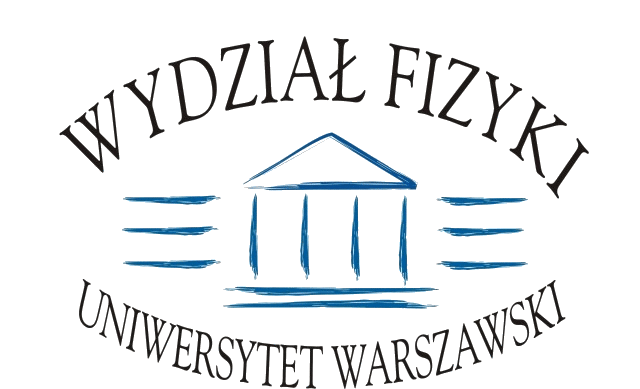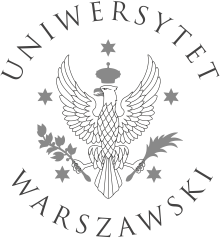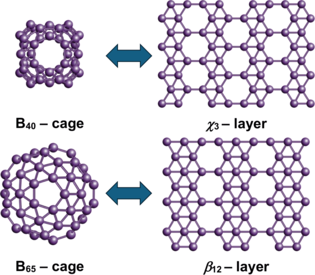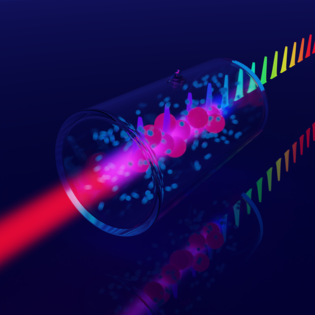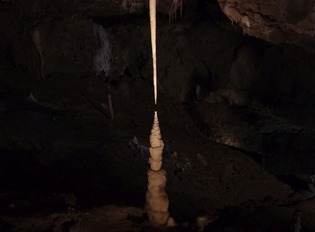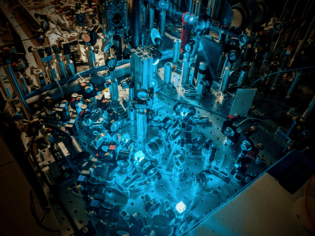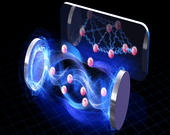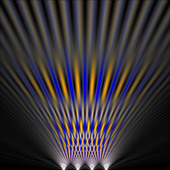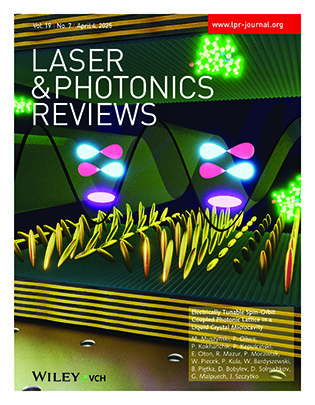Press releases
From Fullerenes to 2D Structures: A Unified Design Principle for Boron Nanostructures
2025-12-08
Dr. Nevill Gonzalez Szwacki from the Faculty of Physics at the University of Warsaw has developed a groundbreaking model that explains the diversity of boron nanostructures—from hollow molecular clusters to ultrathin 2D layers. His research, published in the prestigious “2D Materials”, shows that the key to the stability and electronic properties of these structures lies in the atomic coordination, the number of neighboring atoms. This discovery not only makes it possible to understand existing boron nanostructures, but also to predict and design new materials with desirable properties.| More
Rydberg-atom detector conquers a new spectral frontier
2025-12-06
A team from the Faculty of Physics and the Centre for Quantum Optical Technologies at the Centre of New Technologies, University of Warsaw has developed a new method for measuring elusive terahertz signals using a "quantum antenna." The authors of the work utilized a novel setup for radio wave detection with Rydberg atoms to not only detect but also precisely calibrate a so-called frequency comb in the terahertz band. This band was until recently a white spot in the electromagnetic spectrum, and the solution described in the prestigious journal Optica paves the way for ultrasensitive spectroscopy and a new generation of quantum sensors operating at room temperature.| More
Drip by drip: The hidden blueprint for stalagmite growth
2025-10-18
Deep inside caves, water dripping from the ceiling creates one of nature’s most iconic formations: stalagmites. These pillars of calcite, ranging from centimeters to many meters in height, rise from the cave floor as drip after drip of mineral-rich water deposits a tiny layer of stone. Beyond their beauty - echoed in fanciful nicknames like the “Minaret” or the “Wedding Cake” – stalagmites are also natural archives, recording ancient climatic changes in their layered growth, much like tree rings. But what determines the shape of a stalagmite? Why do some grow into slender cones, others into massive columns, and still others into curious flat-topped forms? A new study by researchers from Poland, the USA, and Slovenia, published in the Proceedings of the National Academy of Sciences (PNAS), provides the first complete mathematical description of stalagmite shapes.| More
Quantum radio antenna
2025-10-16
A team from the Faculty of Physics and the Centre for Quantum Optical Technologies, Centre of New Technologies at the University of Warsaw has developed a new type of all-optical radio receiver based on the fundamental properties of Rydberg atoms. The new type of receiver is not only extremely sensitive, but also provides internal calibration, and the antenna itself is powered only by laser light. The results of the work, in which Sebastian Borówka, Mateusz Mazelanik, Wojciech Wasilewski and Michał Parniak participated, were published in the prestigious journal Nature Communications. They open a new chapter in the technological implementation of quantum sensors.| More
Amplifying collective light emission with atomic interactions
2025-10-10
A team of physicists from the Faculty of Physics at the University of Warsaw, the Centre for New Technologies at the University of Warsaw (Poland), and Emory University (Atlanta, USA) analysed how atoms’ mutual interactions change the way they collectively interact with light. In a paper just published in Physical Review Letters, the researchers extend established models of this phenomenon. By showing that direct atom-atom interactions can strengthen a collective burst of light known as superradiance, the team points to new opportunities for quantum technologies.| More
Next-Generation Quantum Communication
2025-10-02
In the era of instant data exchange and growing risks of cyberattacks, scientists are seeking secure methods of transmitting information. One promising solution is quantum cryptography – a quantum technology that uses single photons to establish encryption keys. A team from the Faculty of Physics at the University of Warsaw has developed and tested in urban infrastructure a novel system for quantum key distribution (QKD). The system employs so-called high-dimensional encoding. The proposed setup is simpler to build and scale than existing solutions, while being based on a phenomenon known to physicists for nearly two centuries – the Talbot effect. The research results have been published in prestigious journals: “Optica Quantum”, “Optica”, and “Physical Review Applied”. | More
Gravitino, a new candidate for Dark Matter
2025-09-19
Dark Matter remains one of the biggest mysteries in fundamental physics. Many theoretical proposals (axions, WIMPs) and 40 years of extensive experimental search failed to provide any explanation of the nature of Dark Matter. Several years ago, in a theory unifying particle physics and gravity, new, radically different Dark Matter candidates were proposed, superheavy charged gravitinos. Very recent paper in Physical Review Research by scientists from the University of Warsaw and Max Planck Institute for Gravitational Physics, shows how new underground detectors, in particular JUNO detector starting soon to take data, even though designed for neutrino physics, are also extremely well suited to eventually detect charged Dark Matter gravitinos. The simulations combining two fields, elementary particle physics and very advanced quantum chemistry, show that the gravitino signal in the detector should be unique and unambiguous. | More
Making the invisible visible: a new way to boost light emission at the nanoscale
2025-08-29
Light still holds surprises – as demonstrated by researchers from the Ultrafast Phenomena Lab at the Faculty of Physics, University of Warsaw, in collaboration with the Institute of Low Temperature and Structure Research, Polish Academy of Sciences, who have discovered a new enhancement effect in the emission of upconverting nanoparticles. They demonstrated that simultaneous excitation of these nanostructures with two near-infrared beams of laser light leads to a significant increase in emission intensity. Under carefully chosen conditions, visible emission emerges only when both beams are applied together, even though neither beam alone produces any emission at all. This discovery paves the way for visualizing infrared radiation beyond the sensitivity range of standard detectors. The findings, potentially applicable in microscopy and photonic technologies, have been published in the prestigious journal “ACS Nano”. | More
Polish physicists co-discover “lonely” spinons - a new step towards quantum technologies
2025-07-07
Researchers from the Faculty of Physics at the University of Warsaw and the University of British Columbia have described how a so-called lone spinon - an exotic quantum excitation that is a single unpaired spin - can arise in magnetic models. The discovery deepens our understanding of the nature of magnetism and could have implications for the development of future technologies such as quantum computers and new magnetic materials. The findings were published in the renowned journal “Physical Review Letters.”. | More
New photonic platform developed by Polish research team
2025-06-25
A team of researchers from the Faculty of Physics at the University of Warsaw, the Military University of Technology, and the Institut Pascal at Université Clermont Auvergne has developed a novel method for using cholesteric liquid crystals in optical microcavities. The platform created by the researchers enables the formation and dynamic tuning of photonic crystals with integrated spin-orbit coupling (SOC) and controlled laser emission. The results of this groundbreaking research have been published in the renowned journal “Laser & Photonics Reviews”. | More
